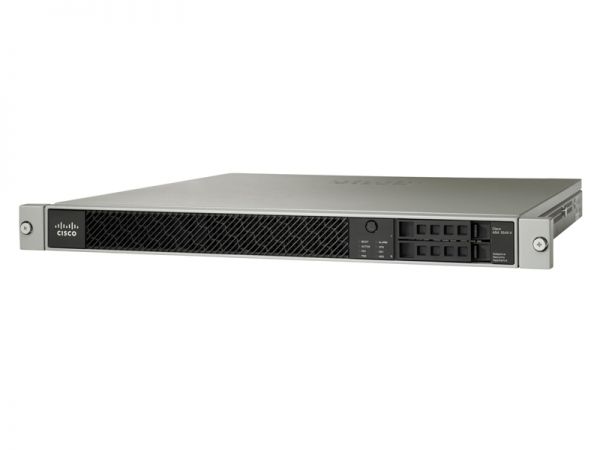C3945-VSEC-CUBE/K9 is the Cisco 3945 router with VSEC CUBE Bundle, including PVDM3-64, UC SEC License and FL-CUBEE-25.
Quick Specs
Figure 1 shows the appearance of the C3945-VSEC-CUBE/K9.

Table 1 shows the Quick Specs.
|
Product Code |
C3945-VSEC-CUBE/K9 |
|
Bundle |
PVDM3-64, UC SEC License and FL-CUBEE-25 |
|
Services Performance Engine module |
w/SPE 150 |
|
Rack Units |
3U |
|
Interfaces |
3 integrated 10/100/1000 Ethernet ports with 2 ports capable of RJ-45 or SFP connectivity |
|
Expansion Slot(s) |
4 ( 4 ) x HWIC 3 ( 2 ) x PVDM 2 ( 1 ) x CompactFlash Card 1 ( 1 ) x expansion slot |
|
RAM |
1 GB (installed) / 2 GB (max) |
|
Flash Memory |
256 MB (installed) / 8 GB (max) |
|
Dimensions |
18.7 in x 17.2 in x 5.2 in |
|
Net Weight |
39 lbs |
Product Details
Figure 2 shows the front panel of the C3945-VSEC-CUBE/K9.

Note:
|
① |
② |
③ |
|
On/Off switch |
Power connector |
LEDs area |
Figure 3 shows the back panel of the C3945-VSEC-CUBE/K9 with slots and ports.

Note:
|
① |
Compact flash 0 and 1 (0, right) |
⑦ |
10/100/1000 Ethernet port GE 0/1 and GE 0/2 (GE 0/1, down) |
|
② |
EHWIC 0,1,2 and 3 (0, far right) |
⑧ |
10/100/1000 Ethernet port GE 0/0 |
|
③ |
USB serial port |
⑨ |
USB 0 and USB 1 (1,top) |
|
④ |
RJ-45 serial console port |
⑩ |
Ground |
|
⑤ |
AUX port |
⑪ |
Service module slots |
|
⑥ |
SFP 1 and SFP 2 (2, top) |
Table 2. Voice Security Bundle Features Table
|
Authentication and Encryption Features |
• Media encryption of voice RTP streams using SRTP • Exchange of RTP Control Protocol (RTCP) information using secure RTCP • SRTP to RTP fallback for calls between secure and insecure endpoints • Secure calls supported in Cisco Unified Survivable Remote Site Telephony (SRST) mode during WAN failover • Compressed RTP (CRTP) supported with media encrypted calls using SRTP |
|
Authentication and Encryption Algorithm |
• Supports AES-128 encryption algorithm • Supports the HMAC secure hash authentication algorithm (SHA 1) |
|
Signaling Authentication and Encryption Features |
• Gateway to Cisco Unified Communications Manager signaling and encryption uses IPSec for Media Gateway Control Protocol (MGCP), H.323 and SIP gateways • IP phone to Cisco Unified Survivable Remote Site Telephony router signaling and encryption uses TLS |
|
Protocol Support |
• MGCP 0.1 (supports MGCP gateways with Cisco Unified Communications Manager) • H.323 (supported on H.323 gateways and CUBE; Cisco Unified Communications Manager interoperability is optional) • Session Initiation Protocol (SIP) • SCCP (Cisco Unified IP Phone) in SRST mode |
|
Module Support |
• Any module that has PVDM2, PVDM3 and/or built-in DSP |
|
Codec Support |
• G.711, G.729A, and G.729 |
Table 3 shows the Cisco Unified Border Element Features (CUBE Versions Include 9.5.1 or Later).
|
Feature |
Support Details |
|
Protocols |
● H.323 and SIP |
|
Protocol and signal interworking |
● H.323 to H.323 (including Cisco Unified Communications Manager) ● H.323 to SIP (including Cisco Unified Communications Manager) ● SIP to SIP (including Cisco Unified Communications Manager) ● SIP to SIP (including Cisco TelePresence calls) |
|
Media support |
● RTP, RTCP, and Binary Floor Control Protocol (BFCP) ● Sub-RTCP for media statistics |
|
Media interworking |
● SIP delayed-offer to SIP early-offer interworking for audio or video calls ● H.323 Slow Start to H.323 Fast Start for audio calls |
|
Media modes |
● Media flow-through ● Media flow-around |
|
Signaling transport mode |
● TCP ● User Datagram Protocol (UDP) ● TCP-to-UDP interworking |
|
Fax support |
● T.38 fax relay ● Fax pass-through ● Fax over G711 |
|
Modem support |
● Modem pass-through ● Modem over G711 |
|
Dual-tone multifrequency (DTMF) |
● H.245 alphanumeric ● H.245 signal ● RFC 2833 ● SIP notify ● Key Press Markup Language (KPML) ● Interworking capabilities include: ◦ H.323 to SIP ◦ RFC 2833 to G.711 in-band DTMF * ◦ Various SIP-to-H.323 DTMF interworking options ◦ RFC 2833 to KPML |
|
Supplementary services |
● Call hold, call transfer, and call forwarding for H.323 networks using H.450 and transparent passing of Empty Capability Set (ECS) ● SIP-to-SIP supplementary services (holds and transfers) support using REFER ● SIP-to-SIP supplementary services (holds and transfers) support using REINVITE ● H.323-to-SIP supplementary services for Cisco Unified Communications Manager with media termination point (MTP) on the H.323 trunk |
|
Internetworking |
● Configurable SIP profiles to manipulate SIP message content, including header fields andSession Descriptor Protocol (SDP) attributes ● P-Asserted-Identity (PAI), P-Preferred-Identity (PPI), and Remote-Part-ID (RPID) internetworking** ● Unsupported Multipurpose Internet Mail Extensions (MIME)-type attachment pass-through** ● Unsupported SIP header pass-through** ● Dial-peer bind (allows Cisco Unified Border Element to connect to multiple different service providers) ● Incoming dial-peer match based on remote IP address ● Assisted RTCP for Microsoft Lync Interoperability |
|
Call routing and dialing options |
● E164-based dialing ● Uniform Resource Identifier (URI)-based dialing ● Routing based on nonsequential lists (either E164 or URI or both) ● Dial Peer Groups (Trunk Groups) (outbound routing determined by inbound dial pattern) ● Server Groups to define order of selection of alternative or backup routing paths for outbound routing |
|
Cisco Call Admission Control (CAC) |
● Maximum number of calls per trunk (maximum number of calls) ● CAC based on IP circuits ● CAC based on total calls, CPU use, or memory use threshold ● CAC based on bandwidth availability and call-spike detection ● Resource Reservation Protocol (RSVP) |
|
OPTIONS SIP message support |
● Support for response to OPTIONS-PING messages with OPTION- PING groups based on session target ● Support for generation of in-dialog OPTIONS-PING messages ● Support for generation of out-of-dialog OPTIONS-PING messages to control dial-peer status** |
|
Media recording |
● Media forking features for both voice and video to integrate with Cisco TelePresence Media Recording Servers ● Active (SIP-based) and passive (application programming interface [API]-based) mechanisms for invoking media forking |
|
IP Routing feature |
● Support for Cisco IOS Software-based routing features, including Border Gateway Protocol (BGP), Enhanced IGRP (EIGRP), and Multiprotocol Label Switching (MPLS) ● Support for Cisco IOS Software-based policy routing features ● Support for Cisco IOS Software-based access-control-list (ACL) features |
|
Voice-quality statistics |
● Packet loss, jitter, and round-trip time (RTT) ● Per-call leg call-quality statistics ● Flexible NetFlow call-quality statistics and information ● Sub-RTCP statistics collection |
|
QoS |
● IP Precedence and differentiated-services-code-point (DSCP) marking ● Per-call QoS packet marking |
|
Network Address Translation (NAT) traversal |
● NAT traversal support for SIP phones deployed behind non-Application Line Gateway (ALG) data routers ● Stateful NAT traversal ● IPv4-to-IPv6 translation |
|
Network hiding |
● IP network privacy and topology hiding ● IP network security boundary ● Intelligent IP address translation for call media and signaling ● Back-to-back user agent, replacing all SIP-embedded IP addressing ● History information-based topology hiding and call routing |
|
Number translation |
● Number translation rules for voice-over-IP (VoIP) numbers ● URI-based dialing translations |
|
Codecs |
● G.711 mu-law and a-law ● G.722 and G.722.2 ● G.723ar53, G.723ar63, G.723r53, and G.723r63 ● G.726r16, G.726r24, and G.726r32 ● G.728 ● G.729, G.729A, G.729B, and G.729AB ● Internet Low Bitrate Codec (iLBC) ● Midcall codec renegotiation ● Adaptive Multirate (AMR) wideband ● AAC-LD |
|
Transcoding |
● Transcoding between any two different families of codecs from the following list: ◦ G.711 a-law and mu-law ◦ G.729, G.729A, G.729B, and G.729AB ◦ iLBC ◦ G.722 ● Midcall transcoder insert and drop |
|
Security |
● Rogue SIP invite and rogue RTP packet detection ● Alerts for rogue packet activity ● IP Security (IPsec) ● Secure RTP (SRTP) ● Transport Layer Security (TLS) ● SRTP-to-RTP interworking |
|
Authentication, authorization, and accounting (AAA) |
● AAA with RADIUS |
|
Voice media applications |
● Tool Command Language (Tcl) scripts support for application customization ● VoiceXML 2.0 script support for application customization ● Web-based API to monitor and control signaling and media traffic |
|
API |
● Web-based API compatible with Web Service Description Language (WSDL) development tools to support call monitoring and control, call-detail records (CDRs), and serviceability attribute interaction with external application; specifically designed for voice-policy applications |
|
Billing |
● Standard CDRs for accurate billing available through: ◦ AAA records ◦ Syslog ◦ Simple Network Management Protocol (SNMP) |
|
Lawful intercept |
● Provision of replicated packets to third-party mediation device |
|
Remote phone proxy sessions |
● Termination of SIP-TLS and SRTP with registration pass-through to allow SIP-based endpoints, including Cisco Unified IP Phone 7900, 8900, and 9900 models and Jabber® Voice Client, to connect from remote sites through the Internet without requiring IPsec VPN to Cisco Unified Communications Manager, Cisco Business Edition, or Cisco HCS (not included with NANOCUBE license) |
|
Line-side back-to-back user agent NANOCUBE sessions |
● Termination of Cisco Shared Port Adapter (SPA) and other third-party SIP endpoints with registration pass‑through and survivability for use with third-party hosted call-control service provider services |
|
Inter-Cluster Lookup Service (ILS) routing |
● Support for ILS routing to complement ILS dial-plan exchange between Cisco Unified Communications Manager clusters or to simplify call-routing complexity between multiple clusters |
|
Video |
|
|
Protocols |
● H.323 and SIP |
|
Cisco endpoints supported |
● Cisco Unified Video Advantage (UVA) and Cisco TelePresence endpoints |
|
Rich media |
● Simultaneous support for data, audio, and video |
|
Signaling interworking |
● SIP delayed-offer to SIP early-offer calls |
|
Media |
● Support for multiplex RTP calls (for Cisco TelePresence solution) ● Simple Traversal of UDP through NAT (STUN)/Datagram TLS (DTLS) pass-through for telepresence |
|
H.323-enhanced features |
● H.235 pass-through for secure calls ● H.239 pass-through for picture-in-picture feature |
|
QoS |
● DSCP markings to prioritize video streams as they traverse the network |
|
Data support |
● T.120 data collaboration flow-around only |
|
Camera control |
● Far-end camera control (FECC) |
|
Video codecs |
● H.261 ● H.263 ● H.264 |
|
Network Management |
|
|
Manageability and serviceability |
● Resource usage monitoring over SIP trunk ● SNMP per-call quality traps ● SNMP and syslog SIP trunk status messages |
|
High Availability |
|
|
High availability |
● Inbox redundancy on Cisco ASR 1006 ● Box-to-box redundancy on Cisco ASR 1000 (based on RG Infrastructure) ● Box-to-box redundancy on Cisco ISRs (Hot Standby Router Protocol [HSRP]-based) Note: Media is preserved for active calls at time of failover in each redundancy configuration listed. |
Compare to Similar Items
Table 4 shows the comparison.
|
Model |
C3945-VSEC-CUBE/K9 |
|
|
SPE |
w/SPE 150 |
w/SPE 150 |
|
Interface |
3GE |
3GE |
|
Rack Unit |
3U |
3U |
|
Bundle |
C3945 VSEC CUBE Bundle, PVDM3-64, UC SEC Lic, FL-CUBEE-25 |
None |
Get more information
Do you have any question about the C3945-VSEC-CUBE/K9?
Contact us now via Live Chat or [email protected].
C3945-VSEC-CUBE/K9 Specification
C3945-VSEC-CUBE/K9 Specification |
|
|
Manufacturer |
Cisco Systems, Inc |
|
Manufacturer Part Number |
C3945-VSEC-CUBE/K9 |
|
Product Type |
Router |
|
Form Factor |
Desktop - modular - 3U |
|
Connectivity Technology |
Wired |
|
Data Link Protocol |
Ethernet, Fast Ethernet, Gigabit Ethernet |
|
Network / Transport Protocol |
TCP/IP, UDP/IP, RSVP, IPSec, PPPoE, L2TPv3 |
|
Routing Protocol |
OSPF, IS-IS, BGP, EIGRP, DVMRP, PIM-SM, IGMPv3, GRE, PIM-SSM, static IPv4 routing, static IPv6 routing, policy-based routing (PBR) |
|
Remote Management Protocol |
SNMP, RMON |
|
Encryption Algorithm |
SSL |
|
Features |
Firewall protection, NAT support, VPN support, MPLS support, Syslog support, content filtering, IPv6 support, Class-Based Weighted Fair Queuing (CBWFQ), Weighted Random Early Detection (WRED), Quality of Service (QoS), Dynamic Multipoint VPN (DMVPN) |
|
Compliant Standards |
IEEE 802.3, IEEE 802.1Q, IEEE 802.1ah, IEEE 802.1ag |
|
DRAM Memory |
1 GB (installed) / 2 GB (max) |
|
Flash Memory |
256 MB (installed) / 8 GB (max) |
|
LED Status Lights Indicators |
Link activity, power |
| Communications | |
|---|---|
|
Type |
Voice / fax module |
|
Digital Ports Qty |
64 |
|
Protocols & Specifications |
ITU T.38 |
| IP Telephony | |
|
VoIP Protocols |
H.323, SIP |
|
Voice Codecs |
G.711, G.722, G.723, G.728, G.729, G.729a, G.729ab, G.711u, G.711a, G.726, iLBC |
|
IP Telephony Features |
Call forwarding, automatic fax/modem detection and pass-through, call hold, call transfer, DTMF generation/detection |
| Connectivity Slots | |
|
Router Interfaces |
3 x 10Base-T/100Base-TX/1000Base-T - RJ-45 Management : 1 x console - RJ-45 Management : 1 x console - mini-USB Type B Serial : 1 x auxiliary - RJ-45 USB : 2 x 4 pin USB Type A 2 x SFP (mini-GBIC) |
|
Expansion Slots Total (Free) |
4 ( 4 ) x HWIC 3 ( 2 ) x PVDM 2 ( 1 ) x CompactFlash Card 1 ( 1 ) x expansion slot |
| Power Supply | |
|
Power Device |
Power supply - internal |
|
Voltage Required |
AC 120/230 V ( 50/60 Hz ) |
| Dimensions / Weight / Miscellaneous | |
|
Approximate Width |
18.7 in |
|
Depth |
17.2 in |
|
Height |
5.2 in |
|
Weight |
39 lbs |
|
Compliant Standards |
CISPR 22 Class A, CISPR 24, EN55024, EN55022 Class A, EN50082-1, CAN/CSA-E60065-00, ICES-003 Class A, CS-03, AS/NZS 3548, FCC CFR47 Part 15, EN300-386, UL 60950-1, IEC 60950-1, EN 60950-1, CSA C22.2 No. 60065, BSMI CNS 13438 |
| System software | |
|
Software Included |
Cisco IOS Unified Communications, Cisco IOS Security, Cisco Unified Border Element Enterprise Edition (25 sessions) |









Customer questions & answers
Customer reviews
0 out of 5
No reviews yet